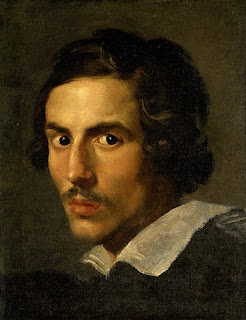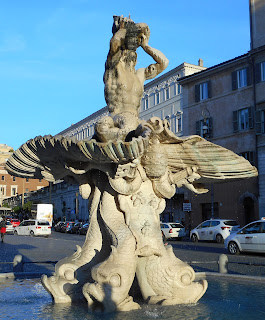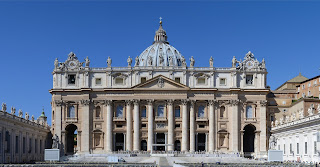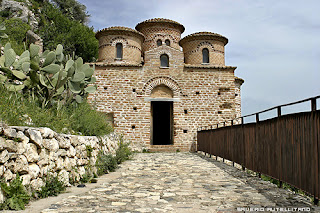'Father of Science' forced to deny that earth revolved around sun
 |
| This 1857 painting by Cristiano Benti depicts Galileo's appearance before the Inquisition |
One of the more bizarre episodes in the history of human
intellectual advancement took place in Rome on this day in 1633 when Galileo
Galilei, the brilliant astronomer, mathematician, philosopher and engineer –
often described as ‘the father of science’ - was convicted of heresy.
His crime was to support the view – indeed, to
confirm it with scientific proof – that the sun rather than the earth was the
centre of the solar system, as had been theorised by the Polish scientist
Nicolaus Copernicus in the previous century.
This flew completely in the face of a major plank of orthodox
Roman Catholic beliefs, within which the contention that the sun
moved around the earth was regarded a fact of scripture that could not be disputed.
Galileo, something of a celebrity in his day who won the
patronage of such powerful Italian families as the Medicis and the Barberinis
following the discoveries he made with his astronomical telescope, had been essentially under surveillance by the Church since 1609 after
publishing details of observations he had made that supported Copernicus’s
theory of heliocentrism.
In 1616 the Copernican view was formally declared heretical
and the biblical interpretation of creation was reaffirmed, part of which said
that “God fixed the Earth upon its foundation, not to be moved forever.”
 |
| Pope Urban VIII - Matteo Barberini - was sympathetic to Galileo |
Galileo feared arrest but was given permission by Pope Urban
VIII, a member of the Barberini faily, to continue his studies into Copernican
theory provided his findings drew no definitive conclusions and acknowledged divine
omnipotence.
However, when in 1632 Galileo published his Dialogue
Concerning the Two Chief World Systems – namely that proposed by Copernicus
and the traditional view put forward by the second century astronomer Ptolemy –
he came down heavily in favour of Copernicus.
He was considered by the Church to have gone a step too far and Urban
VIII, fearing for his future in a fiercely political climate, felt compelled to
act.
Galileo was summoned to Rome for trial by Inquisition in
1633 and despite the strength of his evidence he was found guilty of heresy and
forced to recant his own findings as “abjured, cursed and detested”. He did so
with great reluctance but little choice, given that the alternative was to be
burned at the stake.
As it was he was sentenced to be imprisoned indefinitely,
his Dialogue was banned and the future publication of any of his research was
forbidden. He is said to have muttered
the words “E pur, si muove” – “And yet, it moves” – after declaring the earth
to be a fixed object, which had it been overheard might have enraged the court
still further.
Yet he was again shown some clemency, the sentence of
imprisonment being commuted to house arrest the following day, after which he
was allowed to live out the remainder of his days at his villa at Arcetri, near
Florence.
He went blind in 1638 and died in 1642 but was able,
nonetheless, to reconstruct and summarise the discoveries he had made earlier
in his life in Two New Sciences, which was smuggled out of Italy and published
in Holland.
 |
| The 1630 portrait of Galileo by Peter Paul Rubens resides in a private collection |
Of course, Copernicus and Galileo were subsequently proved
beyond any doubt to be have been right.
Amazingly, it took the Catholic Church more than 350 years to formally
acknowledge their error.
In 1757, Galileo’s Dialogue was removed from the Vatican’s
list of banned publications and in 1984 a panel of scientists, theologians and
historians, assembled in 1979 to look into the 1633 accusations, published a
preliminary report which accepted that Galileo had been wrongfully condemned.
However, it was not until 1992 that the investigation was
closed and Galileo was officially vindicated in a statement issued by Cardinal
Paul Poupard, head of the investigation, which said: “We today know that
Galileo was right in adopting the Copernican astronomical theory.”
 |
| Galileo's house in Arcetri, the Villa Gioella |
Travel tip:
The house to which Galileo returned after his sentence was
commuted to house arrest is called Villa Gioella, which he rented. It is
situated just three or four kilometres – a couple of miles – from the centre of
Florence in the Arcetri hills. In
Galileo’s time it was a farmhouse, surrounded by many acres of land. He lived
there with his daughter Celeste, who was a nun in an adjoining monastery.
Travel tip:
The Palace of the Holy Office, the building in Rome to which
Galileo would have been summoned for trial in 1633, is what is known as an
extraterritorial property of Vatican City, in that it lies outside the confines
of the Vatican itself. The palace, originally built in 1514 for Cardinal
Lorenzo Pucci and called Palazzo Pucci, is situated south of St. Peter's
Basilica near the Petriano Entrance to Vatican City. In 1566–67, the palace was
purchased by Pope Pius V and it was converted into the seat of the Holy Office.










